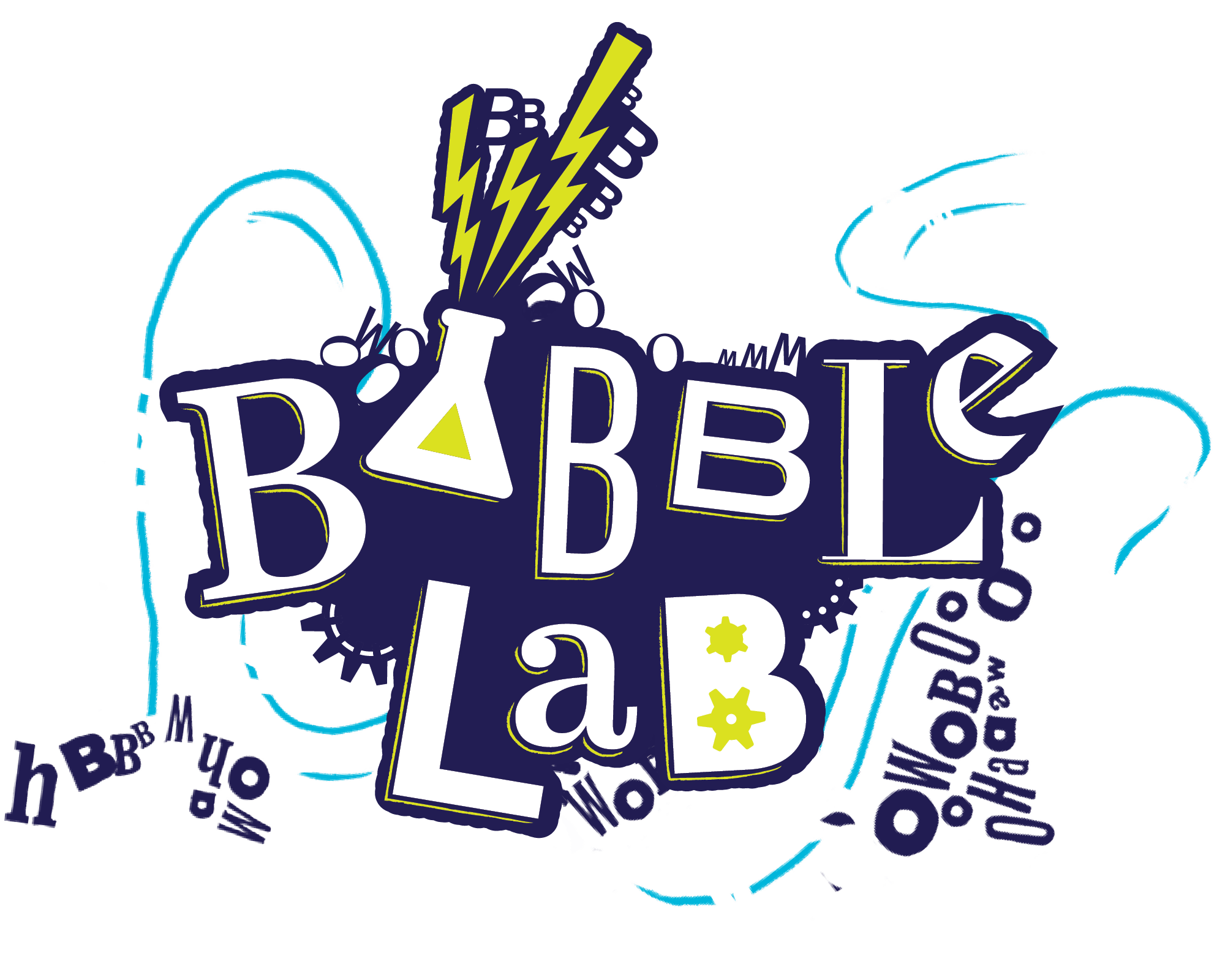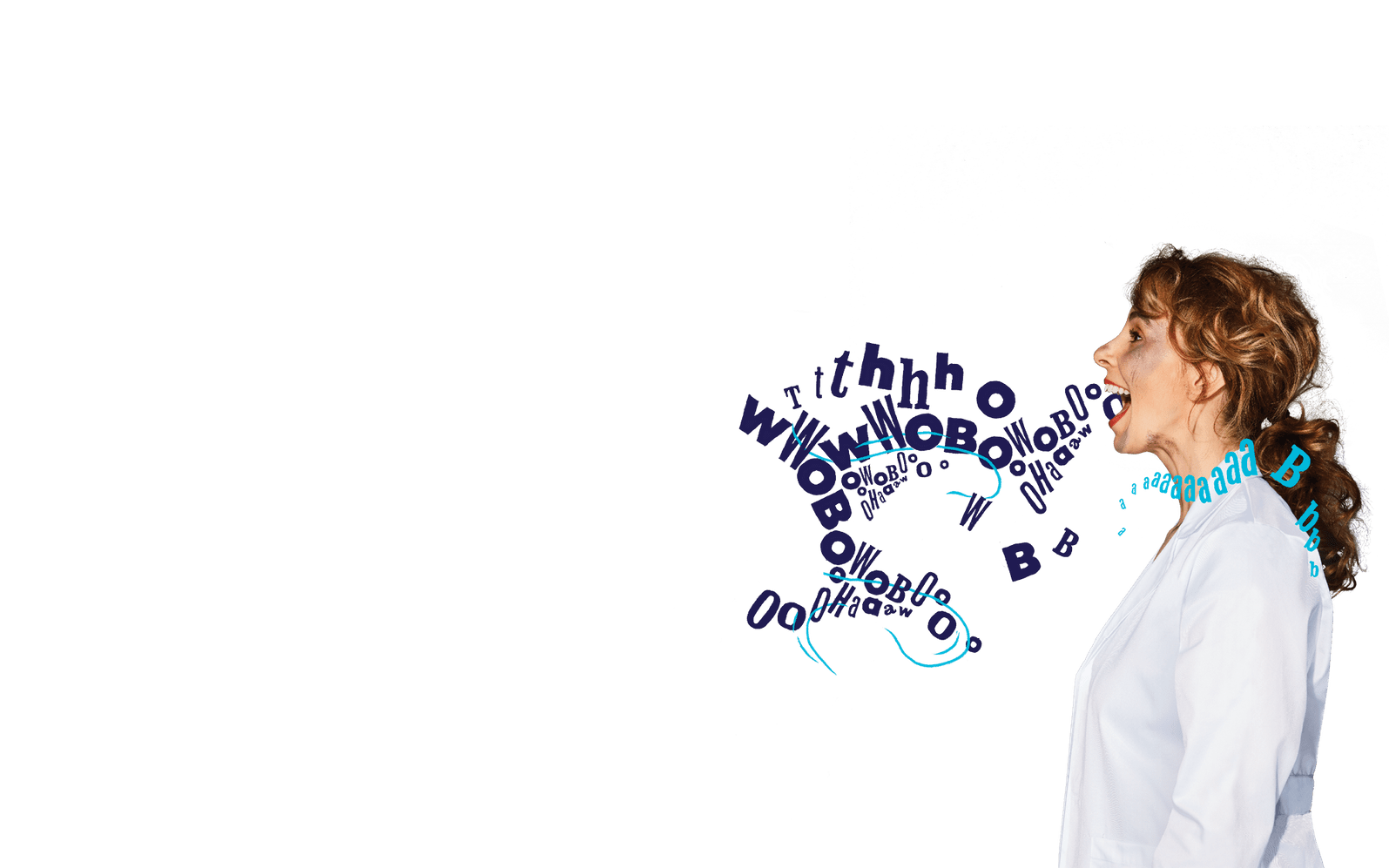

MAR 5 - APR 12, 2024
Best enjoyed by Preschoolers
Student Matinees

Strap on your safety goggles and clean out your ears! When an experiment unexpectedly goes awry, a concoction of sneaky, sprightly L E T T E R S takes over a weird and wondrous science lab. Watch them jump into jars, spring from drawers, bounce around the room, and even play hide-and-seek as our scientist makes her surprising findings: Bluku terullala blaulala loooo! Rakete bee bee? Rekate bee zee! Enjoy the blubbering and blibbering exploration of spoken blurbbles as they spring forth in this one-of-a-kind, gee-gaw-filled laboratory. Created with early learners in mind.
By CTC Company Member Autumn Ness
Directed by Sarah Agnew
About the Show
- This production was created by CTC Acting Company Member, Autumn Ness, as part of our Early Childhood Initiative.
- Babble Lab is specifically designed to be developmentally appropriate for our youngest audience members and is performed in the Cargill Theatre which seats up to 120 people per performance.
- We know that teachers are the best judge to determine the right fit for their unique group of students. We recommend Babble Lab for students in preschool due to the length and nature of this non-verbal performance. Check out the synopsis and content advisories for full information.
Educator Guide
At CTC, our mission is to create extraordinary theatre experiences that educate, challenge, and inspire young people and their communities. This Educator Guide is just one of the ways in which we aim to enhance your experience and further your students’ engagement with the shows on stage. It includes pre- and post-show activities and discussion questions, printouts to send home with permission slips, and important information for the day of your field trip.
Perfect for Preschoolers
We know that children like to touch and move- and have included some ways for them to do so during the play.
- There are specific moments when the actor interacts with the audience including bubbles, balloons, and dancing.
- We want children to feel free to vocalize, so during the play, the theatre is a no-shushing zone.
How is this play different from your other field trip offerings?
- This special offering is specifically designed for preschool students. While our other field trip offerings allow 1 adult for every 5 students, this production allows for 1 adult for every 2 students.
- While our other performances have capacities of 745 (in the UnitedHealth Group Stage) or 298 (in the Cargill Stage), this performance is limited to 120 people to allow for a more intimate setting.
- Seating is done in a library storytelling style with students up front and adults behind.
- 10:30am performances are open to the public. Your performance may include school groups, community groups, and/or family groups.
Content Advisories
Language: 0 out of 5 stars
The actor communicates with the audience using sound and gesture instead of words.
Themes and Situations: 0 out of 5 stars
Violence and Scariness: 0 out of 5 stars
Sensory Advisories: 1 out of 5 stars
Everyday objects and lab equipment are used to experiment with sound. A balloon flies around the room as it emits air and noise. A crash is heard and the lab becomes dark for just a moment.
Potentially Anxious Moments: 1 out of 5 stars
The scientist feels sad.
Full Plot Description
This is a complete description of the play, so it is full of spoilers.
This play is still in development, and this description is subject to change.
The audience enters a world filled with gentle sounds of bicycle wheels, ticking clocks, etc. There is a scientist seated behind a lab table, intently listening to something through a gramophone-like device. When the audience is seated, the scientist takes off her headphones and moves to her experimentation table.
She opens her experiment table, which is outfitted with all the supplies she needs to listen to the world around her. She begins as all scientists should: with safety equipment. Once she has donned her lab coat, goggles, and gloves, she begins her morning “ear warm up.” She picks up a clipboard but when she flips the page, she realizes that it makes a sound. She begins to experiment with the paper to see what other types of noises it can make. Soon, the paper has no sound left to demonstrate and she places the paper into a large silver cauldron on the table.
Being a scientist is hard work. She stops to take a sip of her water through her favorite twirly straw…but wait! This makes a noise, too! She experiments with different ways to make noise with the water, including blowing bubbles, and swirling and shaking the water bottle. When she is satisfied with her experiment, she pours the water into a goblet and places the bottle into the cauldron. Oops! The goblet is too full so she takes a sip from the rim of the glass. She wets her finger and makes the goblet sing. She takes another drink and repeats the same action. The goblet sings at a different pitch than before. Soon all the water is gone and the goblet no longer makes noise.
She searches for another object on which to conduct sound experiments and finds a balloon. Perfect! She blows up the balloon and lets the air screech out. Slowly and then faster, making different rhythms. She lets go of the balloon to make notes when the balloon takes off across the lab, emitting the rest of the air. The scientist retrieves the balloon and places it in the cauldron.
She finds a mousetrap. It doesn’t have much sound to it until she engages the trap. However, she learns the hard way that mouse traps can hurt! She sucks on her finger and wipes it with a bandage. When finished, she throws the bandage into the cauldron. It begins to bubble and shake. She hastily puts the lid on the pot and begins proper safety procedures. She grabs a fire extinguisher and helmet but the helmet keeps blocking her view. She accidentally shoots herself with the fire extinguisher. Suddenly, the cauldron becomes quiet. She puts down the fire extinguisher and carefully peeks into the cauldron. There seems to be no danger, but she dons some large gloves and pulls out the letter W. She is fascinated but the letter does not make any noise. She sets the W on an overhead projector and begins to inspect it. When the scientist is not looking, the letter shakes. She removes the letter from the projector and begins to examine it more thoroughly. Nothing looks, smells, feels, or smells odd but then she decides to pop the letter into her mouth and taste it. Suddenly, she begins to wiggle as something bubbles up inside her. The sound of the letter W erupts from her mouth. She experiments with different ways to use this newfound sound.
She goes back to the cauldron to find the letter B. She repeats the process of examining this letter and then eating it. The sound of the letter B erupts from her mouth and she plays with this newfound power.
She is fascinated by this power and sticks her entire head into the cauldron to eat whatever letters she can find. The letters and their sounds explode out of the scientist. She experiments with combining the letters to make new sounds. The letters begin to animate and come alive on the screen as she makes their noise. She attempts to jar these noises to no avail. Letters are flying around the laboratory when one accidentally breaks a light and the lab goes dark. While the scientist is trying to get some lights back on, the letters begin to tickle her.
She becomes overwhelmed by her attempt to catch the letters when she hears a small tapping noise. The letter F is trapped in a jar. She picks up the jar, releasing the butterfly-like letter which lands on her hand. All the letters begin to greet her. She plays games with the letters including hide-and-go-seek.
Letters begin raining down. At first, the scientist splashes in the letter filled puddles. Then the “water” begins to rise and she must swim to the top. She pulls the plug and the letters wash away until she is left with the last letter, a U. She decides to plant the letter like a seed. She waits until more letters begin to grow into strings of letters making words that aren’t quite words. The tree of letters and words begins to blow in the wind. The scientist takes a big breath and blows the letter leaves from the tree so they can make their way out into the world. She is enchanted.
She grabs her microphone and plays a call and response with the audience using the letter sounds they discovered. She reaches into the cauldron and discovers something new: a number! She runs offstage while eating the new discovery.

“I am so excited that with the world premiere of Babble Lab, I get to return to performing for my favorite audience, the preschoolers,” said Playwright Autumn Ness. “This play is about discovering the power of your own voice, and learning to be fearless in using it. I want every preschooler that sees our show to find their own magical, musical, courageous, EPIC voice!”
Extend the Experience

in person or virtual
Workshops & Residencies
CTC transforms the classroom through multi-disciplined interactive workshops that spark creativity, encourage collaboration, and inspire action. Professional teaching artists facilitate engaging and inclusive learning opportunities for students while personalizing each experience to the needs and interests of your students and the learning goals of your classroom.

